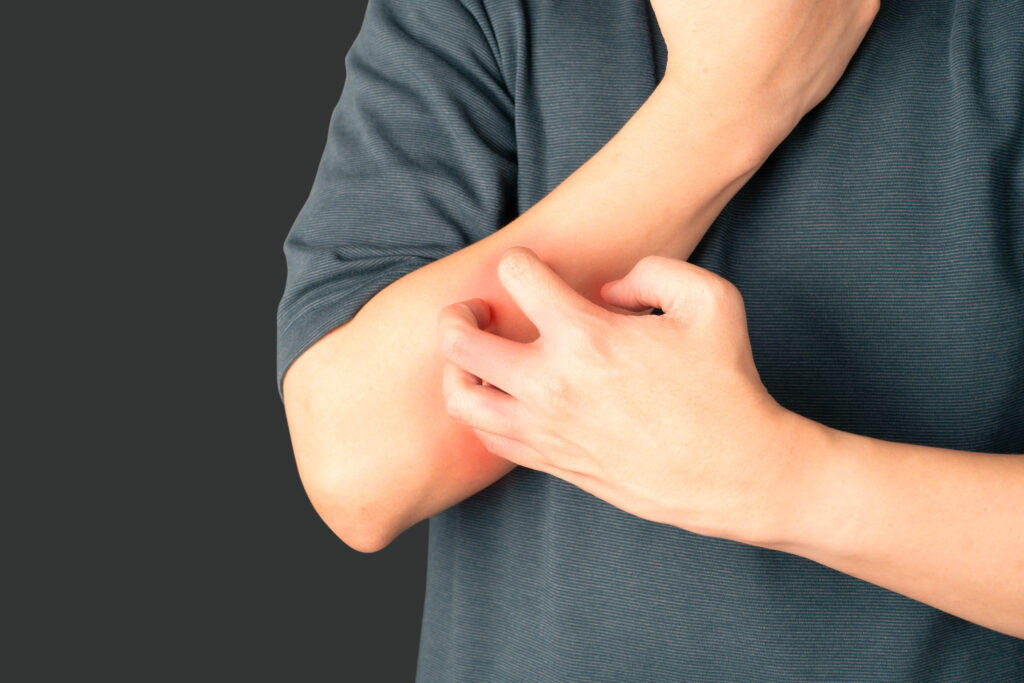
A skin lesion is a part of your skin that looks or feels abnormal compared to the skin around it. They are common conditions and can be as simple as a result of an injury or damage to your skin, like a sunburn, or they can be more complex and point toward serious health conditions, like infections or autoimmune diseases.
Although most skin lesions are benign — meaning non-cancerous — you should get them checked if you have any worries. Some skin lesions may be cancerous [National Library of Medicine].
There are three main categories of skin lesions: primary, secondary, and malignant. Primary lesions are those you are born with or acquire over your life. Secondary skin lesions form from irritated or manipulated primary skin lesions. For instance, if you scratch a mole and a crust develops — that crust is the secondary skin lesion. Malignant lesions are those that are cancerous.
Types and Causes of Skin Lesions
Various skin lesions have been classified and divided into primary and secondary lesions, as well as malignant skin lesions.
Primary Skin Lesions
Primary lesions are the most common types of lesions.
Birthmarks are a type of primary lesion. They include, among many others:
- Port-wine stains
- Nevi
- Moles
Blisters are another type of primary skin lesion. They tend to be round and are filled with fluid. Many factors can lead to blisters, including suffering a burn, insect bites, drug interactions, and more.
Warts are lesions that occur in the mucosa and skin. HPV, a sexually transmitted disease, causes warts.
Nodules might be soft or firm, but they are raised lesions that can be filled with fluid, tissue, or both and are larger than 1 cm. Infections are often the cause of nodules.
Macules are flat skin lesions that are small and tend to be brown or reddish. Examples of macules are freckles and flat moles. The majority of macules are present at birth.
A papule is an elevated lesion. They appear in large numbers in conditions like psoriasis but can also be found singly as a result of a mosquito bite [MSD Manual].
Pustules are lesions that contain pus. Some types of pustules are boils, acne, and abscesses [MSD Manual].
Wheals are swollen, raised bumps that appear suddenly on the skin. Most of the time, they’re caused by allergic reactions. Hives (urticaria) is one example [MSD Manual].
Secondary Skin Lesions
Ulcers are a common type of secondary skin lesion. They are a break in the skin and can be caused by an infection or trauma. Blood circulation issues, smoking, or being bedridden can all cause ulcers [MSD Manual].
Scales are patches of skin cells that flake off. They’re common in people who have psoriasis.
Crusts are another type of secondary skin lesion that forms over scratched or irritated primary skin lesions [MSD Manual].
Malignant Skin Lesions
Malignant skin lesions are skin cancer. Some of the signs that warn you a skin lesion is malignant include seeing:
- New growth on the skin
- A wound that doesn’t heal
- A change in an existing mole or growth
Skin cancer is the most common type of cancer in the United States. Some types of skin cancer are basal cell carcinoma, squamous cell cancer, and melanoma.
Treating Skin Lesions
Treating skin lesions depends on the lesion type, your health, and any underlying conditions you may have.
Primary lesions can be addressed with various treatments, including topical lotions, ointments, medications, or creams. Most treatments will begin with topical medications that reduce inflammation, like corticosteroids.
You can take some medications orally. In certain cases, surgery may be needed. You can also have cosmetic surgery procedures, including laser therapy, to remove benign lesions like moles.
Treating secondary skin lesions connected to an underlying condition requires treating that condition.
For malignant skin lesions, surgical removal is necessary. You may also need other treatments like radiation therapy or chemotherapy if the cancer has spread.
Understanding Skin Lesions
Most skin lesions are benign and stem from common injuries, but others can point to more serious underlying conditions. Because skin cancer is the most prevalent form of cancer, it’s always wise to get any new or changing lesions checked by your doctor to ensure it’s nothing serious.
Knowing your skin and recognizing any changes to it is a vital form of self-monitoring. Because your skin is your largest organ, paying attention to all its signs is important.
Resource Links:
- “Analysis of Types of Skin Lesions and Diseases in Everyday Infectious Disease Practice” via National Library of Medicine
- “Skin involvement in systemic autoimmune diseases” via National Library of Medicine
- “On the History of Classification in Dermatology” via National Library of Medicine
- “Neonatal Birthmarks: A Prospective Survey in 1000 Neonates” via National Library of Medicine
- “Blisters” via Johns Hopkins Medicine
- “Warts” via National Library of Medicine
- “Skin Nodules Information” via Mount Sinai
- “Description of Skin Lesions” via MSD Manual
- “Scales Information” via Mount Sinai
- “Skin Cancer” via American Cancer Society
- “Treatment of Skin Disorder” via MSD Manual
- “Skin Cancer Treatment” via National Cancer Institute





